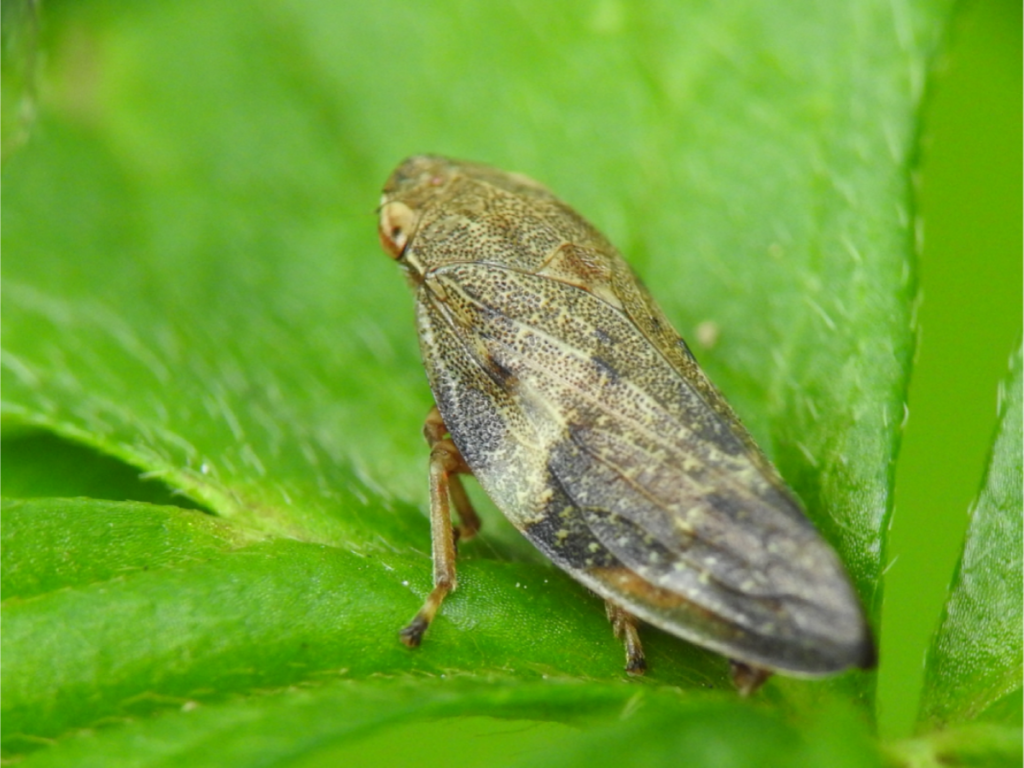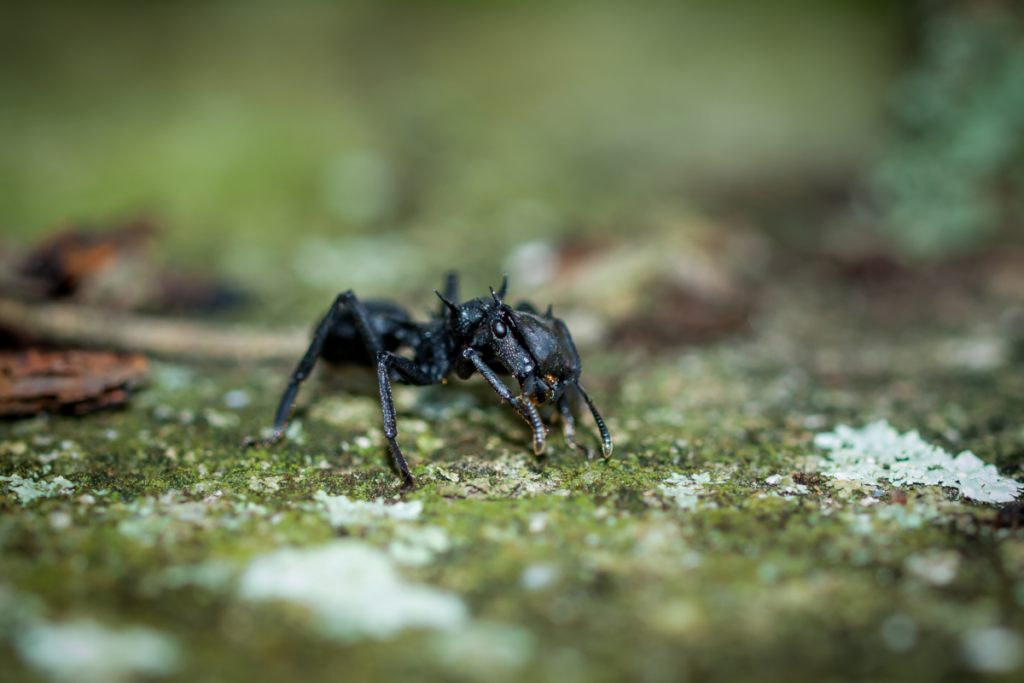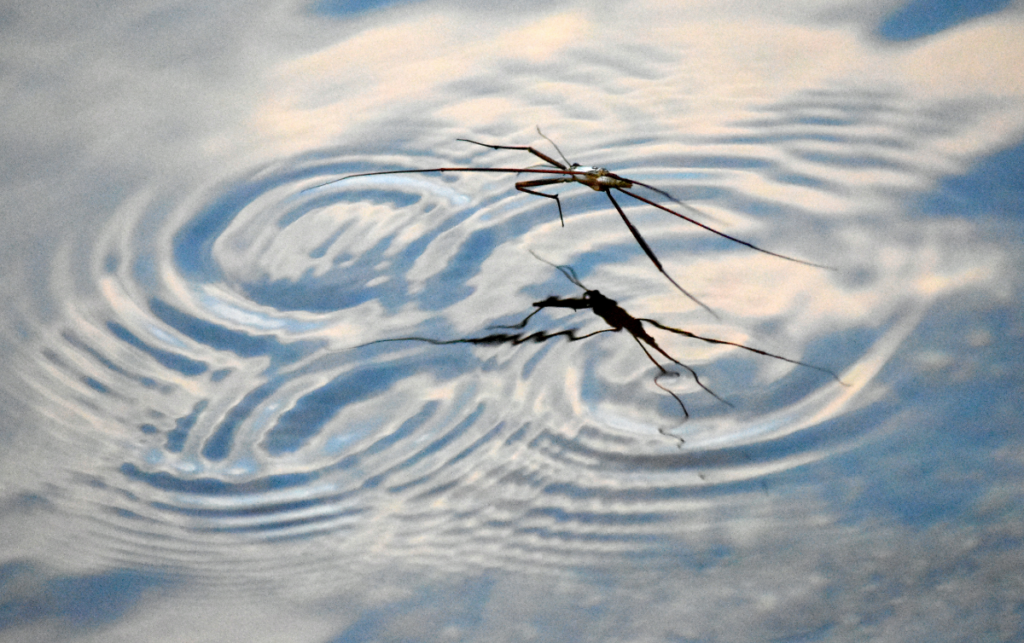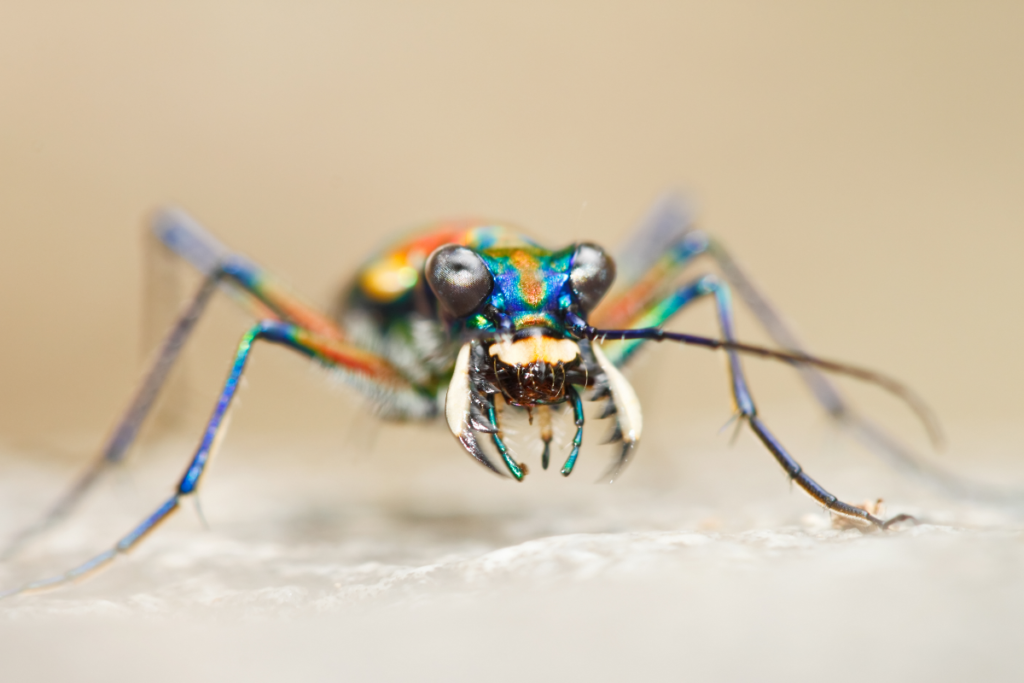Welcome back to the Lab!
The winter Olympics are in full swing, testing the the worlds best athletes with feats of strength, endurance, and precision. But how would these athletes stack up against arthropod competitors?
Let’s hand out some gold medals!
Bobsled, Luge and Skeleton

The bobsled, luge and skeleton races are some of the more dangerous winter sports with competitors facing up to 5 g’s at full speed, meaning they experience up to 5x their own body weight in force. While certainly a feat of human endurance, froghoppers have them beat.
Froghoppers, also known as spittlebugs, are small, hopping true bugs that are commonly found feeding on plant sap. Adult froghoppers use their jumping capabilities to launch themselves from plant to plant, sometimes reaching distances up to 100x their body length. Researchers have found that as they accelerate upwards, these tiny true bugs can experience up to 550 g’s; over 100x the force experienced by the fastest bobsled competitor.
Ski Jumping

Ski jumpers are humanity’s equivalent of flying squirrels, launching themselves from unspeakable heights and managing to glide an unspeakable distance to safely collide with the Earth on both skis. While the minute size of most insects allows them to fall great distances without harm, not many are capable of a controlled descent. Enter, gliding ants.
There are several species of gliding ants, all of them arboreal (tree-dwelling). The problem with living in the treetops though, is gravity. But evolution favors the bold, and gliding ants have evolved an effective strategy for returning to home base. After a short period of freefall, the ant will visually lock on to the tree trunk and assume the “gliding” position. Sure, Olympic ski jumpers can land without breaking their knees, but can they do it on a vertical surface?
Figure Skating

It probably goes without saying that water striders are the figure skaters of the insect world. While figure skaters utilize their sharpened blades to move effortlessly across the ice, water striders are covered in hydrophobic (water-repelling) hairs to help them move across the surface of the water.
Along with their water repellent hairs, water striders have a unique body shape that disperses their body weight across a wider surface area, allowing for buoyancy in the same way that snowshoes allow you to walk on the snow. But water striders don’t just dance across the water’s surface, just like figure skaters don’t placidly glide across the ice during a performance. Water striders are capable of launching themselves into the air by applying just enough force to the water’s surface and tucking their legs in. Figure skaters may have the meticulously choreographed dance routine, but can they do it on water in its liquid state? Water striders take this one.
Speed Skating

Olympic speed skaters are capable of reaching speeds of 30mph on average. The fastest tiger beetle has a top speed of 5.5 mph. It’s not hard to see who would win this race. But if tiger beetles were human sized, well, we’d be in for more than just getting walloped at the Olympics. Tiger beetles are agile, persistent predators, and they are fast.
The fastest Olympic speed skater tops out at 34 mph, or about 8.5 body lengths per second (for a 6 ft. tall person). A tiger beetle measuring in at miniscule 20mm and running at 5.5 mph is achieving about 171 body lengths per second, meaning a 6 ft. tall tiger beetle… is a little too frightening to imagine. But they’d probably make an incredible speed skater.
Until next time, thanks for visiting the lab!
Bug Wrangler Brenna
brenna@missoulabutterflyhouse.org
Want to revisit a previous Notes from the Lab issue? Check out our archive! Do you want to request a subject for an upcoming issue? Email me at the address above and put “Notes from the Lab” in the subject line.